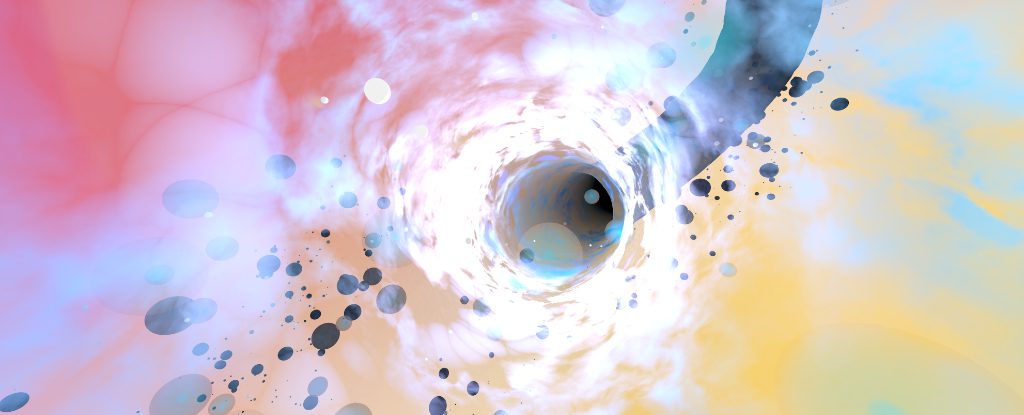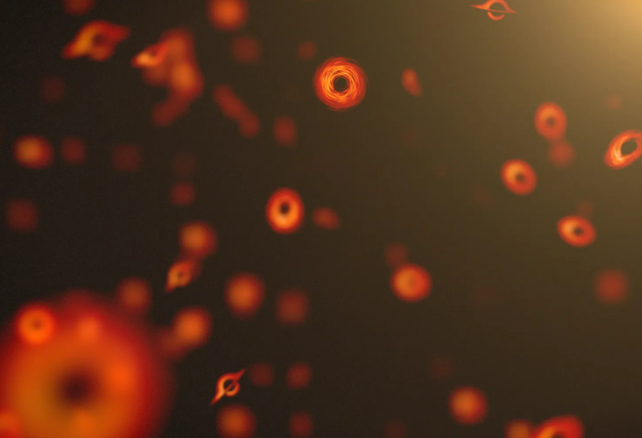
In 1974, renowned science fiction writer Larry Niven crafted a murder mystery revolving around a captivating question: could a minuscule black hole be lethal?
Without giving too much away, many might instinctively reply “yes.” The immense gravitational pull, tidal forces, and the event horizon seem certain to result in a catastrophic demise.
However, the scientific reality presents a more intricate scenario.
On one hand, it’s evident that a sufficiently large black hole could indeed pose a fatal threat. Conversely, a black hole with the mass equivalent to a hydrogen atom is simply too small to be detected.
The core inquiry lies in determining the critical mass. What minimum size of a black hole would render it dangerous? This question is explored in a recent study available on arXiv.
The research begins by examining primordial black holes, which are hypothesized entities that may have formed during the universe’s infancy, significantly smaller than black holes produced from stars.

These primordial black holes could range from the mass of an atom to several times that of Earth. While astronomers have yet to discover any, studies have ruled out certain mass ranges. For instance, any primordial black hole less than 1012 kg would have evaporated due to Hawking radiation.
Any black hole exceeding 1020 kg would demonstrate gravitational lensing of stars in our Milky Way galaxy. Since such effects have not been observed, these massive primordial black holes, if they exist, must be exceedingly scarce.
Some theoretical frameworks suggest primordial black holes might account for dark matter. If true, observational constraints limit their masses to between 1013 and 1019 kg, comparable to the mass of asteroids.
Consequently, this study examines this specific mass range, focusing on two potential effects: tidal forces and shock waves.
Tidal forces arise from the variance in gravitational pull experienced as one approaches a massive object. This implies that a black hole could create a significant force differential, raising the concern of whether this differential could physically damage tissue.
Given that asteroid-sized black holes are less than a micrometer in diameter, the impact of tidal forces would be localized. If such a black hole traversed your body—it would likely result in minor injury akin to a needle’s prick, rather than a fatal incident. However, the scenario changes dramatically if the black hole passed through the head, potentially causing severe damage to fragile brain cells. In such a case, even a force differential as small as 10 to 100 nanonewtons could be lethal, necessitating a black hole at the upper limits of the mass range.
Shockwaves, however, pose a far greater risk. As a black hole penetrates the body, it would generate a density wave, leading to physical cell damage and heat transfer that worsens the injury. To produce a shockwave comparable to that of a .22 caliber bullet, a black hole would need a mass of about 1.4 x 1014 kg, comfortably falling within the range of plausible primordial black holes.
Thus, a primordial black hole indeed has the potential to be fatal.
While this concept is fascinating for storytelling, the reality remains that such an event is exceedingly improbable. Even if asteroid-sized primordial black holes exist, their sparse distribution throughout the cosmos means the likelihood of encountering one in a lifetime is astoundingly low—less than one in ten trillion.
This article was originally featured on Universe Today. Read the original article.









